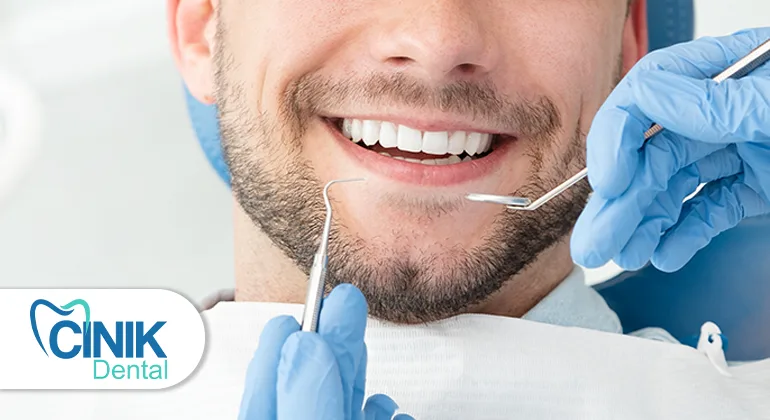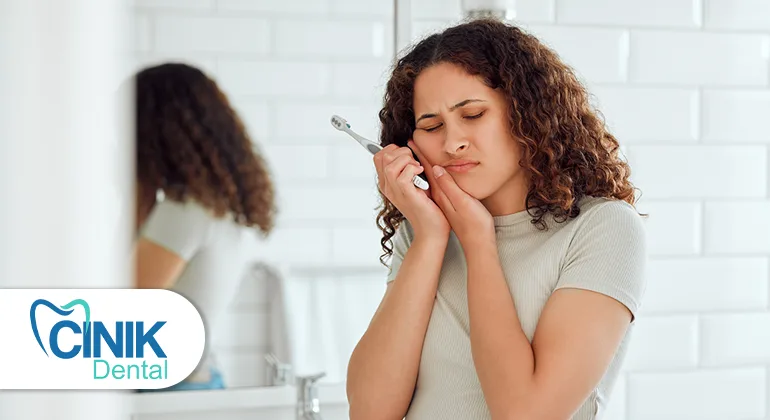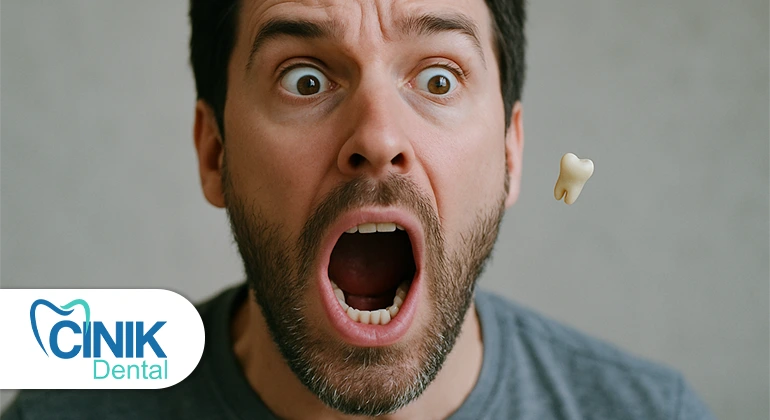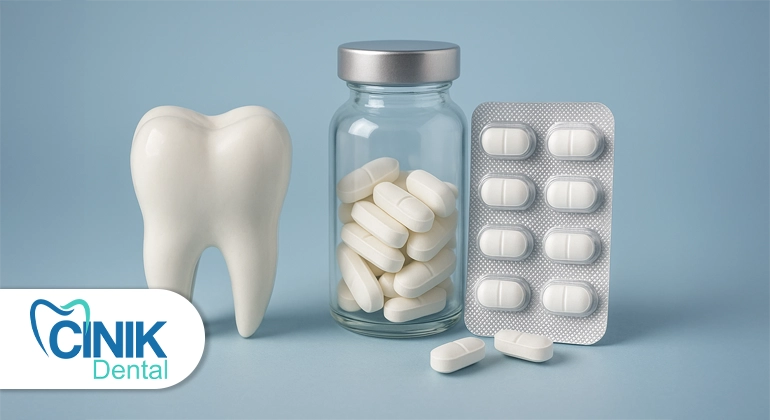Dental Autotransplantation: A Natural Alternative to Dental Implants
So, you’ve probably heard about dental implants and bridges as the go-to fixes when a tooth goes missing, right? But what if I told you there’s a way to literally move one of your teeth around inside your mouth to fill the gap? That’s tooth autotransplantation — kind of like giving your tooth a second chance and a fresh start in a new spot.
In this article, we’ll break down how dental autotransplantation can be an alternative to dental implants, why it might be the coolest dental hack you’ve never heard of, who autotransplantation of teeth is for, and how modern tech is making it easier and more successful than ever. Whether you’re curious about wisdom teeth rescues or how teeth can grow new roots, stick around — it’s pretty fascinating stuff!
What Is a Tooth Autotransplantation Procedure?
Tooth autotransplantation might sound fancy, but essentially, it’s simply transplanting a tooth from one location in your mouth to another — think of it as giving your tooth a mini-home renovation.
Instead of getting an implant or bridge, your very own natural tooth is carefully taken out and popped into place, usually to replace a missing or broken tooth. The coolest part? If it’s done right, the transplanted tooth can grow new roots and settle in like it’s always belonged there. It’s a natural, biological way to save your smile.
The idea of moving molars around isn’t new — the first surgical techniques for molar autotransplantation were documented way back by folks like Apfel, Fong, Hale, and Clark, and a proper surgical protocol was laid out in the ‘70s by Slagsvold and Bjercke.
But don’t get me wrong — this isn’t a quick DIY job. It’s a technique-sensitive process that needs a whole team of pros: pediatric dentists, oral surgeons, endodontists, orthodontists, dental radiologists, and technical support all working together to pick the right case and make sure the donor tooth fits perfectly, especially in the smile zone where looks really matter.
People usually get tooth autotransplantation because of premature tooth loss from trauma, missing teeth due to developmental issues like hypodontia or dilacerations, or even because of crowding or other arch problems. It can also help when teeth have been lost through disease or injury, or to reposition impacted or ectopic teeth.
So yeah, it’s like giving your own tooth a second chance at life — pretty neat, right?
Dental Pulp Autotransplantation
You might be less familiar with dental pulp autotransplantation. That’s when the innermost part of the tooth — the pulp, where the nerves and blood vessels are — is saved. When a tooth is transplanted, the key to success is keeping that pulp healthy. Sometimes the pulp will heal and regenerate after the move, especially in younger teeth with open roots. That enables the tooth to stay alive and ticking for years, without root canals or other treatment. Pretty neat, huh?
Wisdom Tooth Autotransplantation
Got a wisdom tooth hanging around with no space to call its own? It might be a perfect candidate for tooth autotransplantation! Wisdom teeth are often used as donor teeth because they can be readily extracted and transplanted to replace missing molars elsewhere. Since wisdom teeth generally have healthy pulp and solid roots, they can unexpectedly prosper in their new home. So, instead of letting your wisdom tooth cause chaos, it could just save the day — and your smile.
What Is the Purpose of Autotransplantation of Teeth?
The huge plus of tooth autotransplantation is that you’re using your own living tooth, which has all the benefits implants can’t—like a periodontal ligament that helps with natural sensation and bone retention. Autotransplantation of teeth is especially useful for:
- Replacing a tooth lost due to trauma, caries, or even a birth defect (some people are born toothless in some regions).
- Closing spaces in younger patients who aren’t yet ready for dental implants.
- Helping the jawbone and gum tissues preserve more naturally.
- Providing you with a real, functional tooth instead of one made by a machine.
- Imagine losing a front tooth at 14 and being told you have to wait years for an implant. With tooth autotransplantation, you might already have a spare molar (like a wisdom tooth or premolar) that can stand in and do the trick. Cool, right?
Types of Tooth Autotransplantation
Alright, so when we talk about autotransplantation of teeth, we’re not just talking about one single trick — there are actually a few different ways dentists can shuffle your teeth around, each with its own vibe:
- Traditional Autotransplantation
This is the classic move — taking a tooth from one part of your mouth and planting it somewhere else where it’ll do a better job. Think of it like rehoming a houseplant that wasn’t getting enough sunlight — same plant, just a better spot. - Intraalveolar Autotransplant
Sounds like a mouthful, right? But it’s really just nudging a tooth around inside its own socket, kind of like scooting a chair over a few inches to find a comfier position. It’s usually done when a tooth’s gone rogue but is still salvageable. - Intentional Reimplantation
This one’s a bit of a rescue mission. If a tooth has some serious root canal drama and normal treatment won’t cut it, the dentist might pop it out, fix it up outside the mouth, and pop it back in. It’s like turning your computer off and on again — but for your tooth.
So yeah, dentists have a few clever tricks up their sleeves depending on what your teeth are up to.
Dental Autotransplantation, a Natural Alternative to Dental Implants: How Does It Work?
Alright, now let’s get into how the entire dental autotransplantation thing works—step by step. It can sound pretty high-tech (and all right, it does kind of is), but the process is actually pretty sensible once you work it out.
- Planning like pros:
It all starts with some fancy scans and possibly a 3D model of the donor tooth to test the fit—basically a dress rehearsal before the real deal.
- Clearing the way:
If there’s already a tooth in the recipient spot, it gets carefully removed and the area is prepped for the newcomer.
- Practice makes perfect:
Instead of risking damage to the real tooth, they test everything out with the 3D model first. Smart, right?
- The big move:
The donor tooth is gently extracted (like handling something super fragile) and immediately transferred to its new home.
- Securing the spot:
Once it’s in place, an X-ray confirms the position, and the area is stitched up. A little splint may be added to keep things steady.
- Healing time:
You’ll get antibiotics, some aftercare instructions, and then a series of check-ins to make sure everything’s healing just right.
And voilà—your tooth has officially relocated! It’s precise, it’s careful, and honestly, kind of amazing.
Autotransplantation of Teeth Requirements
Dental autotransplantation isn’t a one-size-fits-all solution—it works best when a few specific boxes are ticked:
- First, you need to have a tooth that’s missing or beyond saving, and a healthy spare—like a wisdom tooth or premolar—that can step in as the donor.
- The ideal donor tooth is one that’s easy to remove, preferably something simple in shape, like a single-rooted or cone-shaped tooth. No complicated extractions here!
- There also has to be enough bone in the area where the new tooth is going, so it has a solid foundation to settle into.
- The sweet spot for success is when the donor tooth is still developing—dental stages 4 or 5 are ideal. But even a stage 6 tooth can work, as long as the root tip is still open by at least 1 mm.
- Now, if the donor tooth is fully developed, it’s usually better if the patient is under 30—that’s when the body’s healing powers are still in top gear.
- And finally, this whole thing only really makes sense if it brings clear benefits over other options like implants or bridges—like less time in the chair, lower costs, and a more natural fit with your body.
Candidates for Dental Autotransplantation
Not all are candidates for tooth autotransplantation, but for the patient who is, it is the answer. According to a 2023 study, the ideal patients are usually:
- Young patients under the age of 20 whose jaws are still forming (and who are not yet candidates for implants).
- Patients with a suitable donor tooth available—frequently a wisdom tooth or premolar that isn’t necessary.
- Patients with healthy gums and good oral hygiene.
- People with immature root development on the donor tooth (weird phrase, but it is indeed healthier for healing!).
- People with a clean, infection-free area who are ready to accept the transplant.
Really, if you’re healthy and have a spare tooth stashed away (all right, not stashed away, but you catch my drift), you might be in your lucky day.
Advantages of Dental Autotransplantation
Let’s be real—there’s something amazing about being able to fix a dental issue using your own natural tooth. That’s the magic of tooth autotransplantation. Instead of relying on artificial implants or bridges, you’re literally moving a tooth from one spot in your mouth to another. Pretty cool, right?
So, what makes this option so appealing? Here’re some of the dental autotransplantation perks:
- It’s your own tooth – no foreign objects, no risk of rejection. That living tissue? It’s designed to work with your body.
- Natural feel and function – thanks to the periodontal ligament (PDL), the transplanted tooth has a natural feel, responds to pressure, and even helps keep the surrounding bone intact.
- Cost-effective – this can be easier on your wallet than implants or bridges.
- No need to touch healthy neighboring teeth – Unlike bridges, you’re not shaving down adjacent teeth.
- Orthodontic flexibility – Transplanted teeth can move with braces if needed—bonus!
- Great for kids – Especially when implants aren’t an option due to ongoing growth.
What Is the Success Rate of Dental Autotransplantation?
So, how well does dental autotransplantation actually work? Pretty darn well, actually! Studies show that the success rate is usually above 80%, and some even report survival rates hitting 90% or more.
That means most transplanted teeth stick around and function just fine. Of course, these numbers come with a bit of a “handle with care” note since the research isn’t super uniform or super high quality yet. But overall, it’s looking like a solid option, especially for kids and teens, where implants aren’t always the best move.
Factors that Affect the Success of Tooth Autotransplantation
Now, what makes or breaks the success of a tooth autotransplantation? A few things really matter here:
- Root development: Teeth with open roots (meaning they’re still growing) tend to do better because they can heal and revascularize more easily.
- Atraumatic extraction: The less trauma the donor tooth experiences during removal, the better. Damaging the ligament or root is a no-go.
- The type of tooth: Single-rooted teeth, like premolars, have a higher success rate than multi-rooted ones.
- Healthy recipient site: The spot where the tooth is transplanted needs to be infection-free and ready to welcome the new tooth.
- Surgical technique and follow-up: How carefully the surgery is done and good post-op care (like splinting and monitoring) play big roles too.
Basically, when everything lines up — good timing, careful hands, and a healthy mouth — this procedure can be a winner.
What Are the Most Common Complications of Dental Autotransplantation?
Dental autotransplantation sounds pretty awesome (and it is!), but like anything involving surgery, it’s not 100% risk-free. A few things can go sideways, so if you’re thinking about tooth autotransplantation, here’s what you should keep in mind, according to a 2024 research published in the European Journal of Orthodontics:
Root resorption
This one’s a big deal. It’s basically when your body starts eating away at the root of the new tooth. Sometimes it creeps up slowly, other times it’s faster — and often you don’t even notice until an X-ray gives you a heads-up.
Ankylosis
Sounds fancy, but it just means the tooth gets stuck to the bone. That might seem cool, but it actually stops the tooth from moving like it should and can cause problems—especially if you’re still growing.
Pulpal necrosis
If the inside of the tooth (the pulp) doesn’t heal or get its blood flow back, it can die off. When that happens, you’re probably looking at a root canal down the line.
Infection or inflammation
If things don’t heal right or bacteria crash the party, you can get inflammation or even infection. That’s why keeping things clean and following your dentist’s instructions is super important.
The transplant just doesn’t take
Sometimes, despite everyone’s best efforts, the tooth just won’t settle in. It could be because it didn’t fit right, got bumped around too much, or a bunch of little things adding up.
Late-stage issues: Tooth wobbliness or looks
Even if the tooth survives, it might end up a little loose or out of place, especially if the planning wasn’t spot on. Nobody wants a wonky smile after all that work!
Advancements in Tooth Autotransplantation
Autotransplantation of teeth used to be considered a bit of a gamble—sometimes it worked, and sometimes it didn’t. But with some large tech advancements and better techniques, it’s now becoming very predictable, high-tech therapy.
One of the largest game-changers has been the use of cone-beam computed tomography (CBCT). This 3D view allows the clinicians to have a super high-resolution look at both the recipient site and the donor tooth before even starting the procedure. Add in digital scanning and 3D printing, and now dentists are able to make flawless replicas of the donor tooth. Which is to say they can map out the surgery in millimeter precision and even test the fit on a printed socket first before performing it on actual patients. It’s kind of like a rehearsal dinner, but for teeth.
Surgical techniques have had their own serious glow-up. There is tremendous emphasis on not traumatizing the periodontal ligament (PDL), which allows the tooth to heal and integrate nicely. Surgeons don’t leave the tooth out of the mouth a minute longer than necessary—ideally less than 15 minutes—and treat it with the same diligence as they would a Fabergé egg. All of this equates to much improved healing and fewer complications.
These advances have taken reported success rates of dental autotransplantation far higher than they were once—most current studies report survival rates of over 90%. In the correct patient and the correct hands, autotransplantation of teeth is not only feasible; it is typically the preferred treatment.
Dental Autotransplantation, a Natural Alternative to Dental Implants: Final Thoughts
At the end of the day, tooth autotransplantation is kind of like a smart dental remix — you’re taking what you already have and making it work even better. It’s natural, usually easier on your wallet, and does things implants just can’t, especially when the right folks handle it.
Yeah, tooth autotransplantation takes some planning and TLC, but with all the cool tech and skills dentists have now, success rates are going up, and problems are going down. So, if you’ve got a spare tooth kicking around or just want a clever alternative to implants, autotransplantation of teeth might be the game-changer your smile’s been waiting for.
Better yet! Try growing whole new teeth: The Tooth Fairy’s New Rival: A Drug That Can Regrow Teeth Naturally
FAQs
What are the indications that autotransplantation of teeth is necessary?
Autotransplantation of teeth is usually done to restore teeth lost as a result of trauma, developmental abnormalities, or when teeth just didn’t form correctly.
Can missing teeth be auto-transplanted?
Yes, spaces for missing teeth can be filled by moving another tooth in your mouth to that area.
When is tooth autotransplantation used?
It’s generally used when implants or bridges are not the ideal choice, especially in children or if you just want to keep things as natural as they can be.
What is the most favorable time for dental autotransplantation?
The best time is when the donor tooth’s root is developing—usually in young patients—to give it the best chance to heal and grow.





Leave a Reply